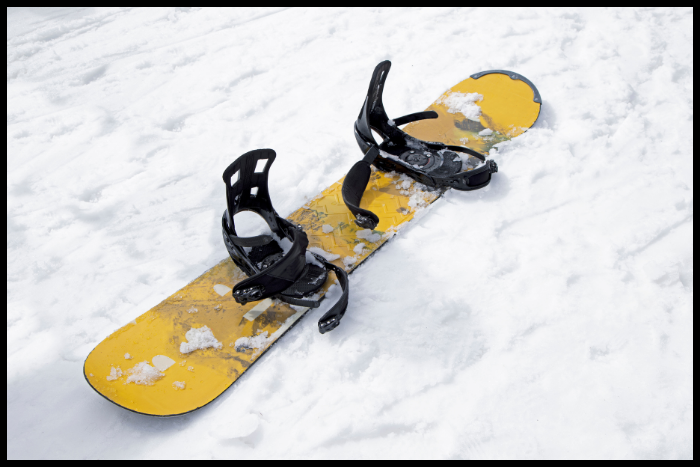Deciding whether to upgrade your snowboard can be a big decision, especially as snowboards are relatively expensive, and you want to pick the right board for the right reasons.
You should always upgrade a snowboard if it’s no longer in a suitable condition for safe riding. You may also want to buy a new board if it’s better suited to your preferred discipline, such as freestyle or backcountry, or if you feel your skills have improved and you’ve outgrown your current one.
Below, we’re going to take a look at the reasons you might have for upgrading your snowboard so you can make an informed choice on whether the time is right to make that call.
Why Do You Want To Upgrade Your Snowboard?
To figure out whether it’s time to upgrade your snowboard, you need to ask yourself the reason why.
While “upgrading” implies trading up to a board of a higher standard, this can have multiple meanings depending on the scenario.
We could be upgrading from cheap to expensive, low-quality to high-quality, or from broken to not broken, so first, let’s examine the possible reasons you might want to trade up on your board.
1. Wear and Tear
There comes a time when any snowboard is past its best, regardless of how it’s been ridden.
The idea of “upgrading” instead of “replacing” implies your current board is still in working order, but that doesn’t mean you should keep it until it breaks.
In fact, if your snowboard is in poor condition, you’re better off upgrading before it becomes unusable.
The last thing you want is for your board to break during the middle of your snowboarding trip or, even worse, while you’re riding it.
Do check out my guide on preventing your snowboard from breaking and repairing it if it does break.

2. Skill Progression
While snowboards aren’t necessarily marketed based on skill level, there are certain qualities that make some better for beginners than others.
For the most part, these are boards with a soft and forgiving flex, slightly shorter than average for added maneuverability, and with a profile that’s less likely to catch an edge while you’re learning.
If you feel that you’re ready to ride harder and faster, it could be a good sign that it’s time to upgrade to a board that matches your increased skill level.
However, make sure you do your homework and learn about the effects flex, length, width, and certain board materials can have on performance, especially in relation to riding ability.
3. Specialized Disciplines
Although it’s not always the case, many of us tend to start out with what’s known as an “all-mountain” style of snowboard, a board designed to be just as effective on the groomed slopes as it is off-piste or in the snow park.
However, while all-mountain boards are an excellent choice for beginners and riders who simply won’t be forced to choose between their preferred disciplines, they’re not ideal if you decide to specialize in a riding style.
If you’ve made your mind up and want to dedicate most of your time to freestyle or backcountry snowboarding, it’s probably time to upgrade to a board designed with that discipline in mind.
If you’re thinking about dedicating your efforts to a new discipline but aren’t quite ready to commit, you’re better off buying a secondhand board to make sure it’s right for you before choosing a brand new one.
4. Because You Want To
Look, sometimes we want to upgrade our snowboard because we like the idea of having a fancy new snowboard.
Your current board might work just fine and be perfectly suitable for your skill level and style of riding, but there’s nothing wrong with treating yourself to new gear every now and then.
In fact, the benefit of upgrading just because you want to is that you’re not under any pressure to find a replacement and can wait until prices drop if you have the patience.
Considerations Before You Upgrade Your Snowboard
Whatever your reason for upgrading your snowboard, there are a few things to bear in mind before you take the plunge and buy a new one.
1. Your Current Snowboard’s Condition
If you think it’s time to upgrade based on the condition of your current snowboard, there are a few ways to confirm your decision.
Signs that you want to upgrade your snowboard as soon as possible might be damage to the core, delamination of the base, significant cracks in the top sheet, or damage to the edges.
Even if your board passes the visual checks, snowboards still lose pop and responsiveness over time, so you may notice performance issues, which are also a sign to upgrade.
If your reason for upgrading has nothing to do with your current ride’s condition, it’s still a good idea to assess it for wear and tear.
You’ll be able to work out if it’s worth keeping as a backup board or even get an idea of its value in the event you want to trade it in to offset the cost of your upgrade.
2. Ask an Expert
Even budget snowboards don’t come cheap, and buying a new board should be seen as an investment. Whatever your reason for upgrading, try to consult an expert for guidance.
Whether you visit your local snowboarding shop and ask the staff or take to specialist internet forums, you’re likely to find plenty of great advice to make sure your next board is the right choice.

3. Arrange a Test Ride
Although arranging to test ride a snowboard might be a little difficult unless you’re already at a resort, it’s worth doing so if you can.
There’s truly no alternative to experiencing the feel of a board in real life to help you make up your mind.
If you’re hoping to get the feel of other types of snowboards, you might also be able to swap with a friend for a day to see how a different board feels.
You can read my article on how much a snowboard type really matters and finding the right fit for you.
4. Affordability
Before you splurge on a new board, whatever the reason, you should always think about how much you can afford to spend.
It’s easy to get carried away and justify dropping more money on a board than you first intended, and this isn’t always a bad thing–a more expensive board usually means higher quality and durability.
But try to set your budget in advance to avoid spending beyond your means.
5. When To Upgrade
There are some occasions, such as when your board has potentially become unsafe due to its poor condition, when you might not have much choice about when you upgrade.
However, there are certain times of year when you’re likely to get a better deal on a board if you time it right.
The best time to consider whether you need to upgrade is towards the end of the snowboarding season.
This is the time of year that shops and manufacturers try to offload stock in time for the following season, so you’re more likely to find a brand-new board at a reduced price.
Know Your Why – It Should Be Strong!
Ultimately, there’s no reason you shouldn’t upgrade your snowboard as long as you know why so you can make the right choice when picking your next ride.
I’d recommend not to upgrade your snowboard just because there’s a fancy new thing in the market.
However, even without a practical reason for buying a new board, upgrading is fine if you set a budget and conduct some research before you reach for your wallet.
Also, I urge you to donate your old snowboard to someone who needs it. Check out my article on donating your old snowboard for the best practices.
